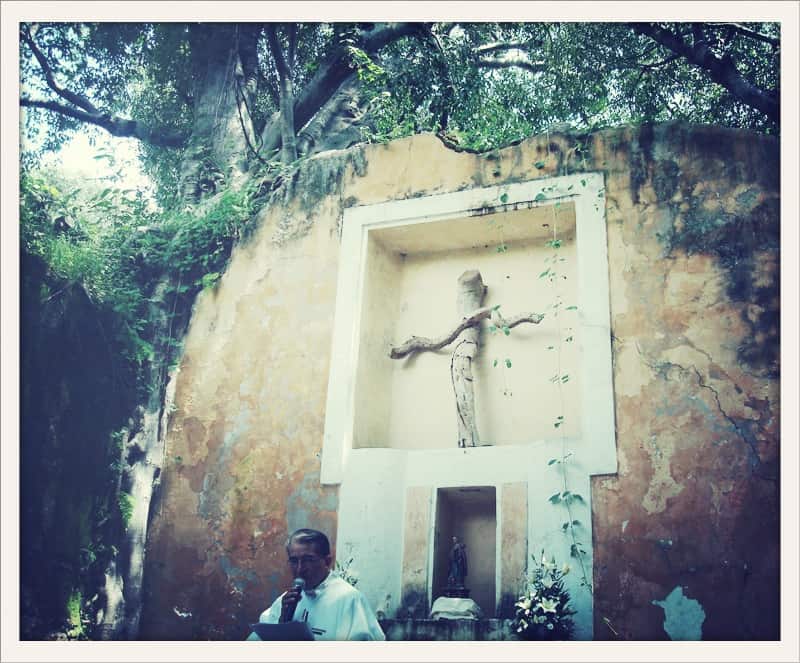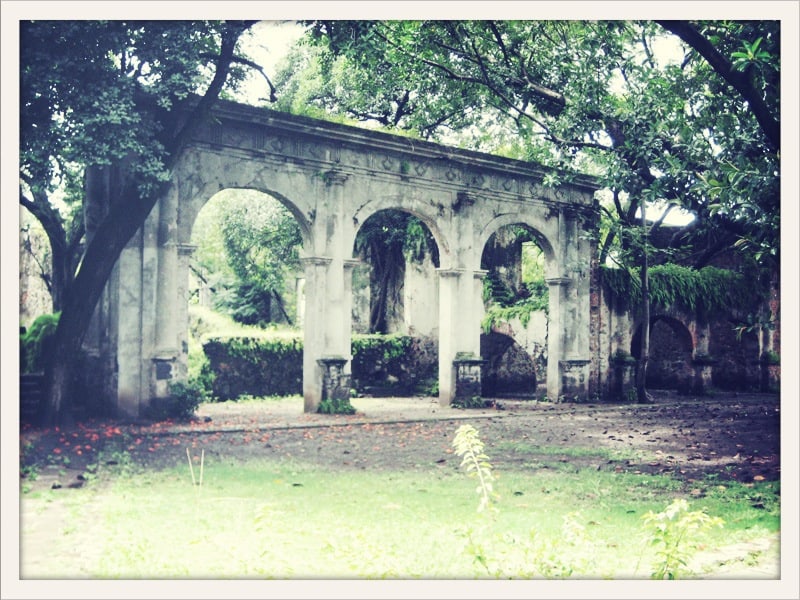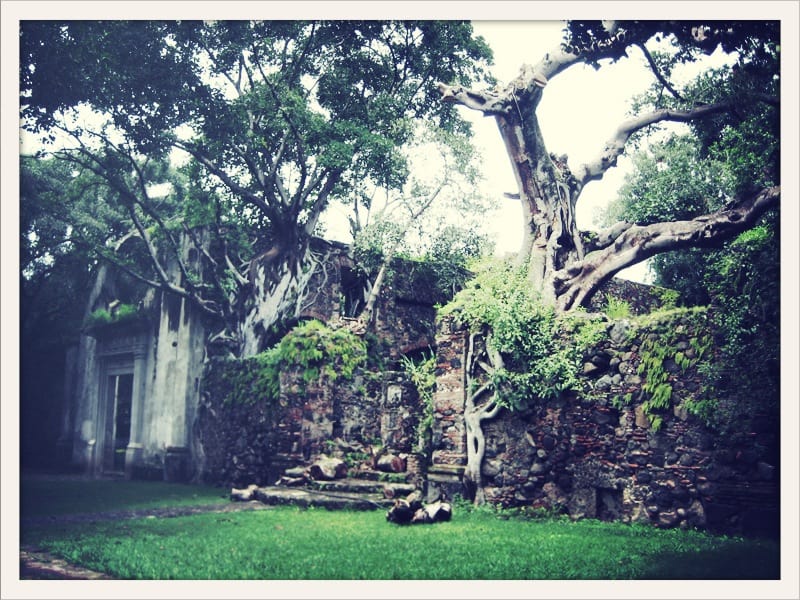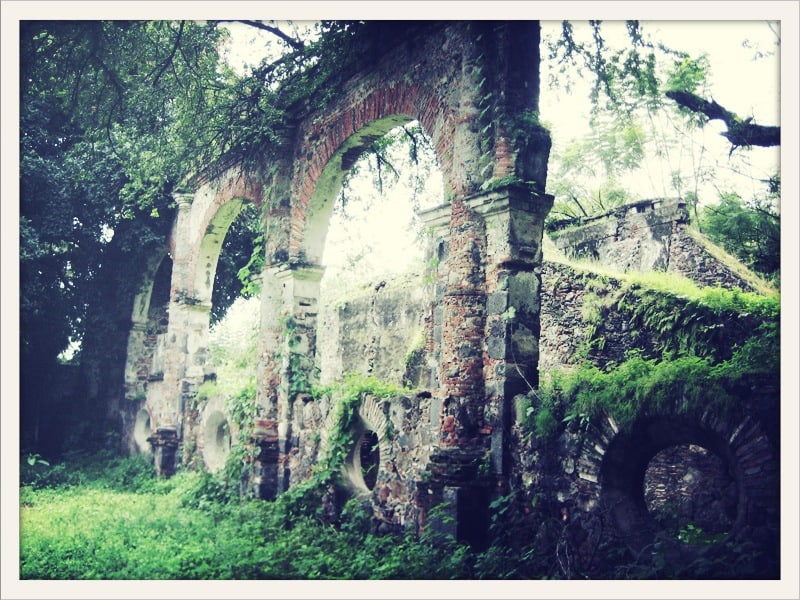In October, I traveled to Mexico for a cousin’s wedding. It wasn’t your typical church wedding followed by a reception at a banquet hall. Instead, it was held at a beautiful ex hacienda in the town of Yautepec, located in the state of Morelos. Not far from Cuernavaca, Yautepec is a short trip (about an hour and a half drive) from Mexico City. If you go, I recommend a stay at the very hospitable Villa Iyautli, where our family often stays. This area is incredibly rich with history and I was thrilled to visit and learn all about it.
THE HISTORY OF THE AREA AND EX HACIENDA APANQUETZALCO
In the sixteenth century, the valleys of Cuernavaca-Cuautla belonged to the Marquis of the valley of Oaxaca of Hernán Cortés and it became a very important location for the development of the sugar industry—the backbone of the region’s economy at the time. Three factors assisted in the development of the industry: fertile ground, an abundance of water and warm weather.
Sugar cane was introduced to the area in 1523 by the conquistadors after the seeds to start the first crop were sent by the Spanish crown. The first sugar cane mills in the region were built around 1535 and at the end of the century, the sugar industry had grown to such a large scale that sugar cane production became the central crop, displacing traditional crops and taking over the best available land.
Hacienda Apanquetzalco was founded in 1613 by Don Francisco Perraza y Rojas and it functioned as a mill until 1870. From that year forward, the hacienda was gradually abandoned and suffered heavy looting that deprived the original structure of its beams and metal, wood and decorative elements. As you can see from the photos, the hacienda is now reduced to ruins. However, its thick stone walls and original adobe reveal a glimpse of the grand splendor it once had at its height, when it spanned nearly 600 hectares (just less than 1,500 acres) and had a highly impressive sugar production operation for the times.
 The hacienda’s chapel, to the left of the entry gates, has a single nave and atrium and the facade has a prominent steeple belfry. Religion was extremely important in the era that the hacienda was actively inhabited. The isolated location, away from the rest of the hacienda, reflects the neutral space in which all were welcome to worship; this was, perhaps, the only time the landowners and those who worked the land for them came together and sat side by side despite social class.
The hacienda’s chapel, to the left of the entry gates, has a single nave and atrium and the facade has a prominent steeple belfry. Religion was extremely important in the era that the hacienda was actively inhabited. The isolated location, away from the rest of the hacienda, reflects the neutral space in which all were welcome to worship; this was, perhaps, the only time the landowners and those who worked the land for them came together and sat side by side despite social class.
The former living quarters of the hacienda, called “la casa grande,” are marked by an elegant and introverted two-level scheme, resulting in various patios illuminating rooms of different sizes, depending on their function. It’s quite spectacular and breathtaking in ruins, so I can only imagine the grandeur of the hacienda in its heyday.
Some production areas of the mill are still identifiable as well. The stonework still retains some of the hydraulic infrastructure, as the mill was water-powered to extract the cane juice and there were multiple aqueducts to carry water to the mill and to the cane fields. The “quarter-purge” feature of the mill, which was used for the production of molasses and the crystallization of sugar (probably to make piloncillo), is still visible today as are the solariums where the sugar processing concluded.
Worthy of admiration and preservation, the ruins of this ex-hacienda are a monument to the history of New Spain and its evolution into modern Mexico.
- Have you ever visited the ex hacienda de Apanquetzalco or any other hacienda in Mexico?






I love wedding at interesting and unique locations. I feel like booking a flight after reading this post to visit the hacienda. Mexico is such a beautiful place with so much history.
Great pics and I loved the post!
No… I have never been to this hacienda, but let me take a minute to kick myself for not exploring this treasure many moons ago. I will have to reserve my visit for a few years from now when my son can travel without having tantrums. Beautiful photos.
Great, another lovely place to add to, MY PLACES TO VISIT IN MEXICO! It gets longer and longer and longer and longer…and…(you get the picture!)
In Peru a lot of people now get married in haciendas too. It’s so beautiful. This one looks breathetaking!
There are just so many amazing places to visit in Mexico. Beautiful images.
Beautifully, almost lyrically written and with accuracy and care. The photos are stunning, too. I lived in Mexico in 1999-2000 and in that time, I did not visit an hacienda. After reading this, I not only have an hacienda on my list, but this one.